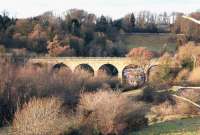This day in history 01 January
Images
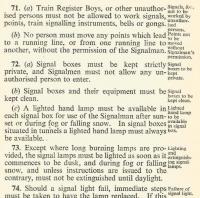
Document: My copy of the British Railways Rule Book is inscribed 'Morningside' (I wonder which one?) on day of publication, 01/01/1950. It reads as if it's from another age, as well it might. The dangers of letting boys near gongs are outlined in Rule 71. Rule 72(a) must have kept many a Railscot contributor busy with a telephoto lens and polarising filter.
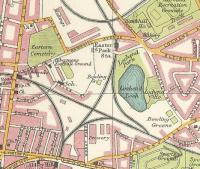
Easter Road Park Halt: The 1953 1:1250 OS map correctly shows Easter Road Park as a 'Halt' with a bare platform on the Leith-bound side only. However in their annual Edinburgh Atlas Guide for 1950 local boys Bartholomew's big it up somewhat and make it look like a full station. In fact it was only used on (some?) match days and was for arriving trains only!
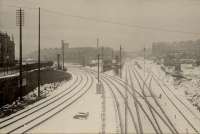
Strathbungo Junction: A snowy Strathbungo Junction, photographed looking north from the bridge carrying Nithsdale Road on New Year's day when no traffic was running. The large building beyond and to the left of the signal box is Coplawhill Tram Depot and Works. Christmas Day only became a holiday in 1958 (according to the Scotsman) or 1967 (Wikipedia).
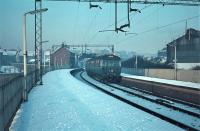
Dalreoch: An Airdrie service calls at Dalreoch on New Year's Day, 1962.
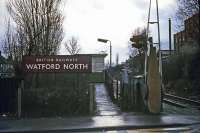
Watford North: The halt at Watford North used to have very little to commend it in terms of visual charm. Sited on the Watford Junction to St Albans Abbey branch, this is the view towards the junction on January 1st 1977. It was a time when care and maintenance was minimal, the rolling stock extremely shabby and the prospects of the whole branch doubtful. The halt is still open, however, and it looks much more presentable today.
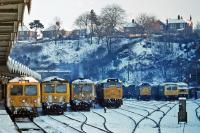
Ipswich: The 1978-79 'Winter of Discontent' was also notable for its exceptionally harsh weather, as this view of Ipswich station M.P.D. on New Years Day shows. Despite all the snow, ice and grime, the stock was still able to function and key services were being maintained even though it was a bank holiday Monday. Complete abandonment of service due to such adverse weather conditions was unthinkable at the time, even if it meant delays and passengers shivering in unheated carriages. By the next century, there was a greater readiness to capitulate to the elements to avoid damage to rolling stock and infrastructure, perhaps because it was reasoned that, with the advent of smart phones and live platform information, no intending passenger could be left stranded and unaware at an unstaffed station.
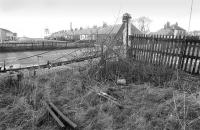
East Wemyss Level Crossing: Looking south over the A955 at East Wemyss on 1 January 1986. Remnants of the Wemyss Private Railway level crossing with the headframe of Michael Colliery in the background.
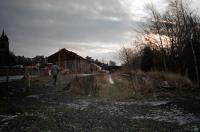
Kilmacolm: Kilmacolm in 1987 looking to Elderslie. The left hand platform was latterly in use after the line was terminated here and one track lifted. EC walks up the platform to the left. See image [[17771]]
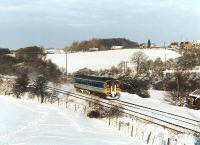
Crigglestone: Happy New Year! Single unit 153331 runs between Crigglestone Junction and the former Crigglestone station heading for Sheffield on a snowy New Year's Day 1997.
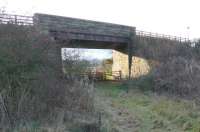
Mawcarse: Overbridge to the west of Mawcarse station where the trackbed is crossed by the A911. View looks west. [With thanks to Brian McDevitt for correcting the details.]
[Railscot note: this bridge was on a re-alignment of the line from 1890, the opening of the Forth Bridge and Glenfarg line, to ease a curve here. The formation is still visible today and often mistaken for a station.]
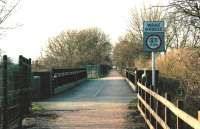
Blunham: Looking East towards Sandy on the former Varsity Line from Oxford to Cambridge, it is clear by the weight limit that this bridge will never carry trains again. But it has a Tarmac surface to make walking and cycling easy. This part of the line will not be reopened - a more Southerly route is preferred - between Luton and Stevenage, if I recall correctly.
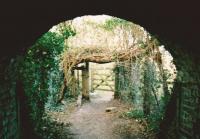
Blunham: This underpass on the Sandy side of the station see image [[30753]] has a rustic air. It helps if you're short to pass through the gate in the background.
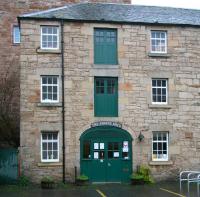
St Leonards: They went around the corner of the police station and into The Engine Shed. Hynds admitted he had not known it was there. 'It really was an engine shed', she told him, 'steam engines, I suppose. They pulled goods trains...coal or something. There are still bits of the railway line, they run down to Duddingston.' Excerpt from 'Resurrection Men' by Ian Rankin. The Engine Shed cafe - actually part of an old goods shed - at the former St Leonards terminus on 1 January 2008 ... and yes, it's just round the corner from St Leonards nick.
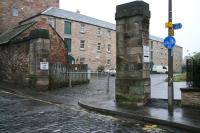
St Leonards: View southeast across St Leonards Lane, Edinburgh from the rear of the Lothian & Borders Police Central Division headquarters on St Leonards Street into the former yard of the Edinburgh and Dalkeith Railway. The sizeable old 1831 E&D goods shed, which has been beautifully restored, is now home to an operation specialising in the preparation and supply of vegetarian food, as well as The Engine Shed cafe.
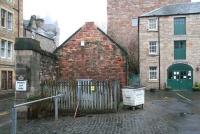
St Leonards: The western entrance to St Leonards in January 2008 with St Leonards Lane running past the site on the left. At this time the large former goods shed on the right was being used for the preparation and packaging of vegetarian food, as well as operating its own in-house cafe known as 'The Engine Shed'. (See image [[17655]]).
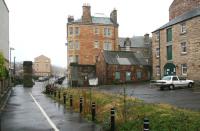
St Leonards: Part of Edinburghs former St Leonards terminus as it was on a wet New Years Day in 2008. Housing developments had by this time claimed much of the old Edinburgh & Dalkeith site dating from the 1830s, although the large goods shed on the right had managed to survive. The building had in fact been sympathetically refurbished and at this time housed a food preparation service together with a cafe named The Engine Shed. View is north west towards the gate pillars that stood at the entrance to the yard from St Leonards Lane.
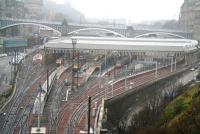
Edinburgh Waverley: The morning after the night before.... view over Waverley on a misty New Years Day, 1 January 2008. Some of the various festive season fairground attractions can be seen along Princes Street and Market Street but the most notable feature has to be the North Bridge - without a bus in sight!
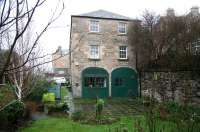
St Leonards: The southern approach to St Leonards following the climb up from the tunnel ([[17736]]) on 1 January 2008. The surviving former goods warehouse, now known as The Engine Shed, specialises in the production and supply of vegetarian cuisine, as well as housing its own cafe/restaurant. The northern exit from the old yard onto St Leonards Lane can be seen just beyond the van in the left background.
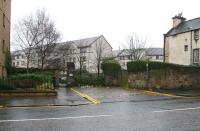
St Leonards: The site of Edinburgh's first railway terminus was at St Leonards on the south side of the city, reached by the Edinburgh and Dalkeith Railway in 1831. The photograph shows the former main road entrance to the site (which included extensive coal distribution facilities) the major part of which is now occupied by flats. View looking east across St Leonards Street on 1 January 2008.
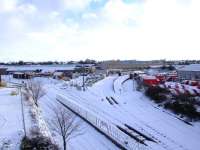
Rose Street Junction: Inverness Station on New Year's Day 2010 with a train in every platform and not a soul to be seen. 158724 is on the extreme right.
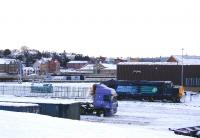
Needlefield Carriage Sidings: The ends of the east facing platforms at Inverness viewed over the Needlefield Container Depot on New Year's Day 2010. In the foreground, inside the depot, is DRS 37423 Spirit of the Lakes resting between snowplough duties, while an East Coast liveried 125 unit stands in the background.
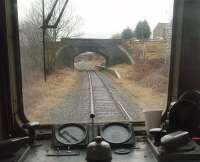
Ewood Bridge and Edenfield: The remains of Ewood Bridge and Edenfield station, as seen from the rear of a passing ELR DMU heading for Bury. The station closed in 1972, with the Rawtenstall line, and in the preservation era has been replaced by Irwell Vale some distance to the south with the single line being slewed into the centre of the trackbed. See image [[19139]] for a picture of the station immediately before closure.
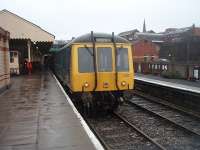
Bury Bolton Street: Gloucester RC&W bubble car W55001 at Bury Bolton Street on a Heywood bound New Year's Day 2011 ELR service. It is not widely known that sister unit M55019 was used experimentally on the Rawtenstall branch around 1970. However, whilst it proved more than adequate for Monday to Friday services, it could not cope with Saturday loadings and services reverted to the Cravens and Derby twin power car sets. M55019 then went into departmental service as DB975042 and was regularly seen in the North West on route learning duties. It is now stored at Aylesbury as Sandite unit 960 015. W55001 betrays its own departmental route learning service as there is no bulkhead between the brake section and the drivers compartment.
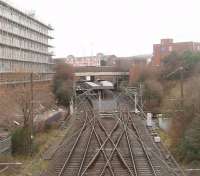
Bury Interchange: Bury Interchange, now over thirty years old, as seen from an ELR train passing over The Hump on the Heywood line that replaced the flat crossing at Bury Knowsley Street. Originally used by Bury line EMU services the Interchange was converted to Metrolink operation in 1992 and a tram can be seen in one of the platforms. The pointwork in the foreground is needed for the six minute frequency service that is in operation on most days. See image [[24666]]
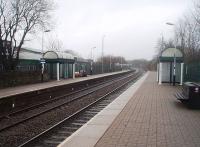
Church and Oswaldtwistle: New Year's morning at Church and Oswaldtwistle, looking towards Accrington. Just beyond the end of the platforms was the entrance to Accrington Motive Power Depot, which only finally closed to DMUs in the early 1970s. The buildings behind the far platform occupy the site of the old goods yard. See image [[30519]] for a view of the original goods shed and the predecessor waiting shelter.
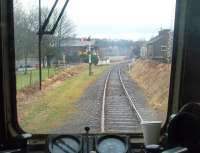
Rawtenstall: Townsend Fold signal box was staffed right up to the 1972 withdrawal of Bury to Rawtenstall passenger services. Thereafter the coal train crew opened the box to operate the level crossing until full closure in 1981 after which it slumbered until the East Lancashire Railway re-opened the line. This view towards Rawtenstall from the rear of a DMU heading for Bury shows the crossing, signal box and semaphores. The distant signal is for Rawtenstall West level crossing, just round the corner.
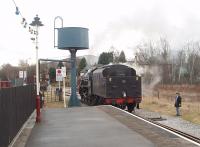
Heywood: Temporary terminus?. 44871 draws forward to run round its six coaches, newly arrived at Heywood. The East Lancashire Railway and Rochdale Council have announced long-term plans to extend services from here through to Castleton where they will link to main line services. The track beyond the level crossing is presently only used for light engine movements to and from the mainline junction and occasional through excursions.
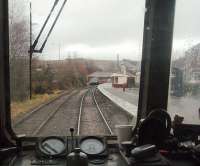
Rawtenstall: Rawtenstall, as seen from a departing DMU service for Bury and Heywood. This was a through station until 1966 and the two wagons are standing just about at the point where Cam Camwell captured a Bacup bound push pull service in 1951. See image [[21209]]
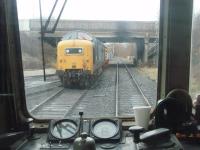
Bury Castlecroft Goods: The view from a New Year's Day 2011 DMU service from Rawtenstall to Heywood. Deltic 55022 Royal Scots Grey and a couple of diesel shunters are on the stabling road outside the small diesel repair shed at Castlecroft Goods.
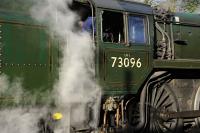
Medstead and Four Marks: 73096, a BR standard 5, waiting to leave after crossing a westbound train.
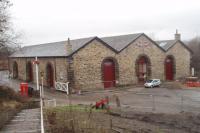
Bury Castlecroft Goods: Home of the ELR when it first moved from Helmshore to Bury around 1971, this is Castlecroft Goods shed which sits at right angles to the line near the north end of Bury tunnel. It has recently been refurbished as the interactive Bury Transport Museum and is seen here from the entrance steps that lead from Bolton St.
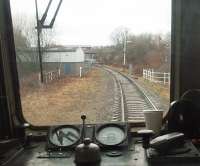
Tottington Junction: Tottington Junction was the point where the Holcombe Brook branch left the Bury to Ramsbottom line and there was a signal box situated by the semaphore seen here and also a profusion of goods yards and exchange sidings. Since the branch finally closed in 1963 the railway yards have been built on and just a plain single line remains. View towards Summerseat in January 2011 from a Rawtenstall to Heywood ELR DMU.
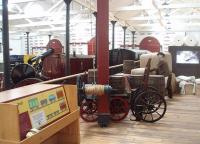
Bury Castlecroft Goods: Interior view of Castlecroft Goods shed aka Bury Transport Museum. I remember well the condition of this building when the ELRPS first took possession. It had been used by contractors building the nearby Bury bypass and was in a terrible state but is now clean, light and airy. The interesting collection of vehicles and displays make the most of the original goods shed features such as this elevated platform with a covered goods wagon alongside being loaded and entry is free to those purchasing an all line day ticket on the ELR.
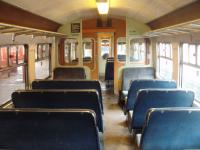
Bury Bolton Street: Interior of a Met-Cam Class 101 DMU at Bury Bolton Street on 1st January 2011. The external livery was a very presentable BR Green but this blue moquette dates from later BR service. This unit has since left the ELR but there are several other heritage DMUs of various classes in operation there now.
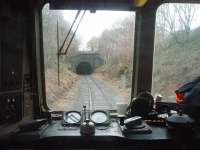
Nuttall Tunnel: DMU driver's eye view of the south portal of Nuttall Tunnel on the East Lancashire Railway. The train is in the short cutting between Nuttall and the longer Brooksbottom Tunnel from where it will emerge on to Summerseat viaduct.
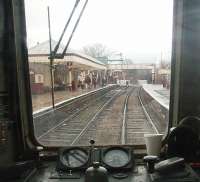
Ramsbottom: View from the rear of a DMU departing from the restored station at Ramsbottom on a service to Bury. The crossing gates are opening to road traffic after the departure of a Black 5 hauled train for Rawtenstall. The DMU'S rev counter indicates the driver is just selecting second gear.
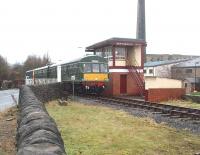
Rawtenstall: First ELR service of the day/year arrives at Rawtenstall running in over the level crossing past Rawtenstall West signalbox. There was a corresponding Rawtenstall East box that controlled the level crossing at the other end of the station but this was closed along with the Bacup line in December 1966. The 2-car Met Cam DMU was augmented by a Gloucester RC&W bubble car on this service. See image [[32793]]
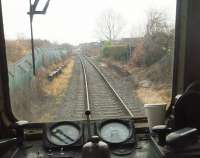
Broadfield: The disused platforms at Broadfield, closed in 1970, are seen from the rear of a Met Cam DMU heading for Heywood on the East Lancashire Railway. See image [[20996]] for a view of Broadfield in 1968. The former goods yard is now occupied by housing that reaches right up to the old platforms, hence the trimmed hedge on the right hand side of the line.
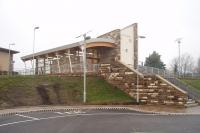
Accrington: No new railways in NW England in 2010 but there is a striking new station building at Accrington. It has been built across the old Bury line trackbed and replaces a rather nondescript 70s building that was inconveniently sited on the other side of the Blackburn line.
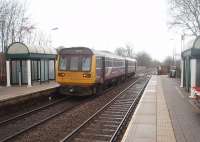
Church and Oswaldtwistle: A New Year's Day 2011 service from Colne to Blackpool South calls at Church and Oswaldtwistle. Just round the bend 142004 will cross the Leeds and Liverpool canal and then run alongside it to the next stop at Rishton.
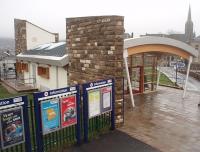
Accrington: The wheel has come almost full circle at Accrington as the new ticket office is almost on the site of the original main station building, demolished forty years previously See image [[54930]]. The new building actually stands where the line to Stubbins and Bury ran and is impressive from all angles.
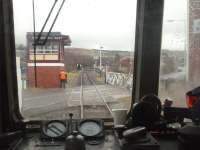
Rawtenstall: Rawtenstall West signal box and level crossing at the start of 2011, as seen from a departing DMU heading for Bury. Although this signal box used to cover a double track main line and goods yard, and doesn't operate the gates or any signals at present, the scene is still a great improvement over that shown in Ian Dinmore's post closure picture taken from the same position 23 years earlier see image [[32793]].
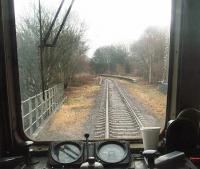
Stubbins: The widening trackbed indicates this was Stubbins Junction where the Accrington line diverged from that to Rawtenstall and Bacup, although the station platforms only served Bacup line trains. Stubbins' platforms have not seen a passenger for almost forty years now but are still extant as seen here looking north from the rear of a passing ELR DMU service. See image [[19681]] for the same location thirty years earlier.
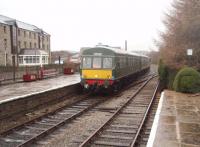
Rawtenstall: A Class 101 DMU waits at Rawtenstall for the first ELR departure of the year for Bury and Heywood. The line to Bacup used Met Cam sets from as early as 1956 but they soon gave way to the Cravens units that would serve until final BR closure in 1972. See image [[32157]] for the same location thirty years earlier.
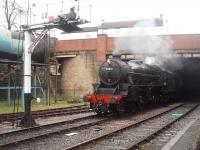
Bury Bolton Street: 44871 emerges from the tunnel at Bury Bolton Street on a service arriving from Rawtenstall on New Year's Day 2011. Earlier in the week the Black 5 had double headed with Leander from Manchester to Carlisle and back and it covered all steam services on the ELR over the New Year weekend.
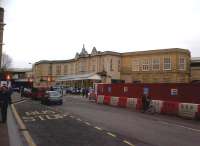
Bath Spa: Bath Spa station on New Year's Day 2012 - an intriguing mixture of Mendip stone, red steel and plastic!
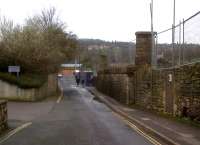
Bath Junction: The junction between the S&D (foreground) and the Midland Railway (background) west of Bath Green Park station is slowly fading away. The wall in the right background of this view is the latest casualty, being sacrificed to a new housing development. Long live the remains of the S&D!
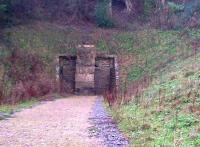
Devonshire Tunnel: The North portal of Devonshire tunnel, on the outskirts of Bath, is not yet accessible, but at least you can now see it - which is more than could be said for the last 30 years or so. Photographed on a wet New Year's Day 2012! See image [[45263]]
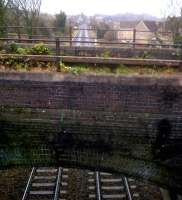
Bath Junction: This location, East of Oldfield Park station, is where the S&D crossed the Great Western. Their physical position may have been superior, but their financial position was worse. Happily, the S&D bridge has recently had some very neat maintenance done. View east on New Year's Day 2012.
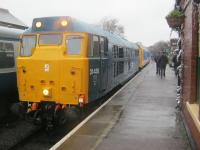
North Weald: 31438 with an Epping Ongar Railway service to Ongar waiting to depart from North Weald on a very wet 1st January 2014. When opened in 1865, this was the highest point on the Great Eastern Railway system until the opening of the Elsenham & Thaxted Light Railway in 1913 and which closed in 1952. (See my photo, image no. 78466, for details of the history of this locomotive.)
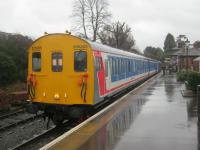
Ongar: Where once Central Line tube trains waited, between November 1957 and September 1994, 205205 is seen here at Ongar station, Epping Ongar Railway, brought in by 31438, in pouring rain on New Year's Day, 1st January 2014.
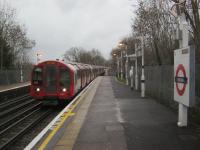
Debden: LUL 1992 stock no. 91267 with a Central Line service to Epping arriving at Debden station in Essex, on 1st January 2014. This station was opened as Chigwell Road, later Chigwell Lane, by the GER on 24th April 1865 when the line was extended from Loughton to Ongar. It was renamed Debden when the line was electrified and tube trains extended from Loughton to Epping on 25th September 1949.
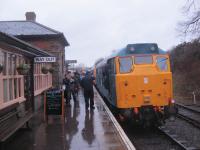
Ongar: 31438 at Ongar, Epping Ongar Railway, on a very wet New Year's Day 2014.

North Weald: Ex-GWR class 5101 'Large Prairie' 2-6-2T 4141, dating from 1946, at the restored loop platform at North Weald on 1st January 2014. The platform, track and signal box have been restored by the Epping Ongar Railway Company, having previously been decommissioned by London Transport in 1976, when still part of the Central Line.
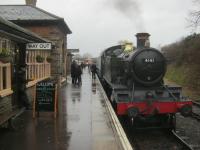
Ongar: Ex-GWR class 5101 'Large Prairie' 4141, dating from 1946, about to run round at Ongar, Epping Ongar Railway, in pouring rain on New Year's Day 2014. Hard to believe now that this was once a distant outpost of the London Underground Central Line although never built as such, originally opened in 1865 by the Great Eastern Railway.
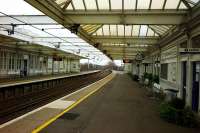
Troon: Deserted station on Ne'er day. Looking south.
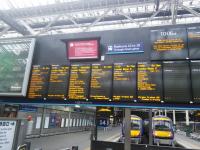
Edinburgh Waverley: New year's day in Edinburgh and you can go anywhere you want - so long as it's in England. The leftmost train is showing, strangely, as 'Penzance and Depot'. This is perhaps catering for people who are celebrating too heavily and miss the terminus. Look, it only happened once.
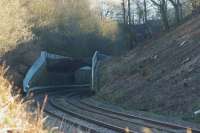
Chorley Tunnel: Looking east towards the 16 Chorley Arches that keep the cutting walls apart. The Chorley Tunnel is just beyond the bend to the right and traffic on the A6 at Hartwood Roundabout can be seen through the trees towards the top right
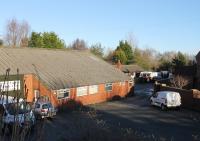
Preesall: This is the site of Preesall station and its small goods yard, now occupied by an egg packing plant. The tracks followed the line of trees behind the building and this view, taken from the B5377 road as it climbs towards the old over bridge, looks towards Pilling. From the opposite side of the bridge the old railway can be walked most of the way to Knott End See image [[55509]]. The original station was a small timber frame building with a corrugated tin roof, which opened in 1908 and closed in 1930.
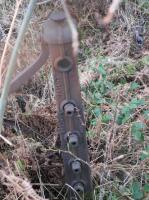
Craig-na-Cailleach Platform: Cast Iron fence post still in situ, which also has manufacturer's name still readable. Picture was taken on a wee New Year's Day walk on the Rob Roy trail at the west side of Loch Lubnaig.
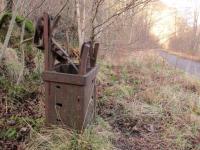
Craig-na-Cailleach Platform: The stump of one of the rockfall signals, like their more famous counterparts in the Pass of Brander, seen at the side of Loch Lubnaig, Northbound on the Rob Roy Way near Rock Cottage. [Ref query 25 March 2018] See image [[49414]].
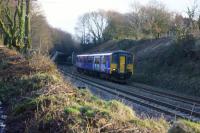
Chorley Tunnel: A New Year's Day service from Bolton to Blackpool exits the cutting at the west end of the Chorley Tunnel. Recent vegetation removal in preparation for electrification has opened up this view.
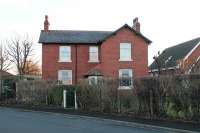
Knott End: Station House at Knott End, sited some distance from the station building see image [[18813]] and now surrounded by modern housing. The bungalow to the right of the picture stands on the site of the old KER carriage shed. The railway saw its last train in 1950. [Ref query 415]
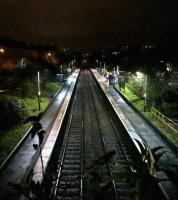
Oldfield Park: The first evening of the New Year, looking towards Bath Spa. For a daytime view see image [[55059]].
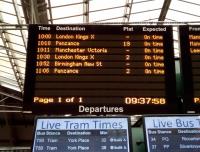
Edinburgh Waverley: Six departures in the next hour and a half? It can only be New Year's Day when no ScotRail services run. You're OK if you live in Dunbar or Lockerbie though.
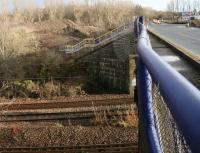
Newcraighall North Junction: New steps have recently appeared on Whitehill Road, Millerhill, seen here looking east on 1 January 2018. The steps, which feature a gated access, stand opposite the main entrance to Millerhill Depot (top right). Possibly part of a direct 'staff only' walkway (?) between here and Newcraighall station, which stands 250m off to the left see image [[61124]]. (Note that, despite the close proximity of the station, the shortest 'official' pedestrian route between the two is currently just over 1.5 km.) [Ref query 1 January 2018]
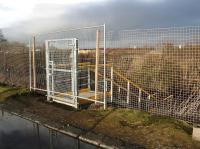
Millerhill Marshalling Yard [North]: The gate on Whitehill Road giving access to the newly constructed steps see image [[62355]]. View north on 1 January 2018 with the entrance to Millerhill Depot behind the camera. Newcraighall station is in the right background below the road bridge which carries the A1 over the railway.
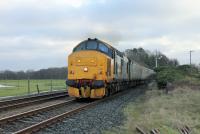
Arnside: A good start to 2018. 37403 Isle of Mull accelerates away from the Arnside stop with 2C47 Preston to Barrow on New Year's Day morning 2018, with the growl from the engine audible all the way to Grange-over-Sands. The DRS contract with Northern is scheduled to run until January 2019 but there is speculation that Class 37 use may end with the start of the 2018 summer timetable.
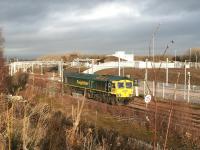
Millerhill EGIP Depot: Freightliner 66956 about to run back towards the south sidings at Millerhill on 1 January 2018. The junctions for the new ScotRail EMU Depot can be seen in the left background, with the depot itself located off to the right beyond the wire fence.
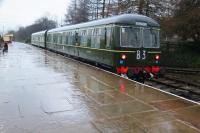
Rawtenstall: Despite fading light and heavy rain the quality of the restoration of Cravens Class 105 Sc51485 shines through as it awaits departure on the 15:35 from Rawtenstall on the East Lancashire Railway on 1st January 2018.
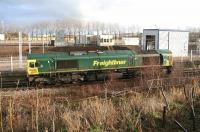
Millerhill EGIP Depot: News Years Day 2018 at Millerhill sees Freightliner 66956 passing some of the new infrastructure associated with the ScotRail EMU Depot which is scheduled to come into operation later this year.
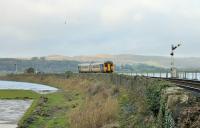
Arnside: High tide in the Kent Estuary as refurbished Northern Sprinter 156481 comes off the viaduct and slows for the Arnside stop on 1st January 2018.
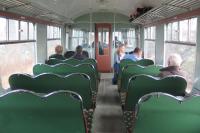
Interiors: A deserved winner of the Railcar of the Year award 2017. The quality of the interior restoration, including the distinctive curved seat backs, of Cravens Class 105 Sc51485 can be appreciated as it leaves Heywood on 1st January 2018. Not only does it look the part of the Newton Heath sets which used to work the Bury to Rawtenstall branch prior to closure in 1972 but the restoration team has succeeded in replicating both the distinctive rattle of the windows in the saloon and the sticking windscreen wiper which regularly needs manually moving out of the driver's line of sight!
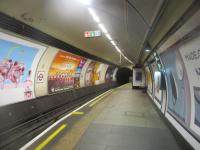
Borough: The northbound platform at Borough station, LUL Northern Line, looking south, on 1st January 2019. This is one of the original stations on the world's first deep-level Underground, the City & South London Railway (originally to have been called the City of London & Southwark Subway) that opened on 18th December 1890. The station and line closed for two years between 1922 and 1924 to enable the tunnels to be enlarged (with replacement bus services running) and at the same time, the line was connected to the Charing Cross, Euston & Hampstead Railway, opened on 22nd June 1906, at Camden Town in the north and at Kennington in the south. When reopened in 1924, the combined line became known as the Morden-Edgware Line until 1937 when somebody at the LPTB decided to rename it the Northern Line, notwithstanding that a large portion of the route lies in SOUTH London! Obviously one of London Transport's little jokes which has remained to the present day.
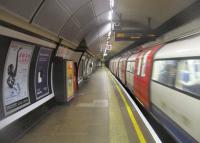
Borough: LUL 1995 stock on a Northern Line service to Edgware via Bank arriving at Borough station, on 1st January 2019.
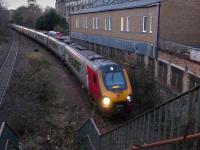
Newington [NBR]: It is after 4pm and getting dark as the 10.43 Virgin Trains service from Euston to Edinburgh Waverley passes the site of Newington Station on the Edinburgh Suburban line on 1st January 2019. Diversion due to engineering works at Haymarket.
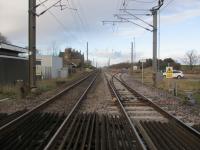
Belford: Closed Belford Station looking North (Down) on a warm New Years Day 2019. The line to the right went into the former Easington Quarry which is now Belford Quarry and owned by Tarmac. In the distance there are passing loops North and Southbound and a refuge siding just beyond the former Station.
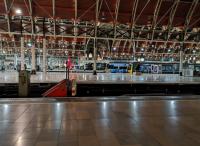
Paddington: Paddington with an HST, a Heathrow Express, and a Thames Turbo, looking very Christmassy on New Year's Day. I had to explain to a Chinese fellow traveller why an area of terrazzo flooring was known as The Lawn.
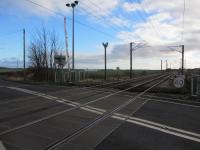
Belford: Sign for Belford Junction taken from the Level Crossing on 1st January 2019. In the distance crossover points can be seen.
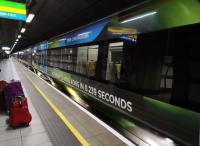
Heathrow Terminals 2,3 [LT]: It may be pretty; but at £25 for a 15 minute trip, catching Heathrow Express to Paddington means I am spending money a lot faster than I am earning it.
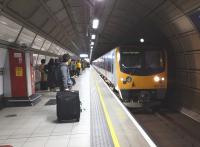
Heathrow Terminals 2,3 [LT]: A Class 360 isn't as glam as a Heathrow Express unit; but with an Oyster card, Heathrow to Euston cost us £10 each. For another 20 minutes' travel time, saving £33 seemed like a good deal.
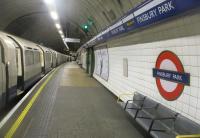
Finsbury Park [GNPBR]: Refurbished LUL 1973 stock on a Piccadilly Line service to Cockfosters calling at Finsbury Park station, an interchange with the LUL Victoria Line and National Rail services, on 1st January 2019.
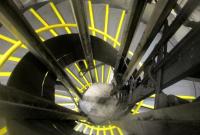
Borough: View down the spiral staircase (with 102 steps) at Borough station, LUL Northern Line, on 1st January 2019. Only to be used in an emergency, on this occasion my friend also named David and I had no choice but to walk down as the lifts were out of action so that, in TfL's view, presumably constitutes an emergency. Although as it was just after 8.30 p.m. on New Year's Day, we were the only passengers using the station at that time. This is the most northerly of the stations of the original City & South London Railway that opened on 18th December 1890 between King William Street and Stockwell, another 'first' for London being the world's first deep-level underground line. (King William Street station was abandoned and replaced by Bank when the line was extended north to Moorgate on 24th February 1900 via new tunnels diverging from the original north of Borough station, however the old terminus served as an air raid shelter during World War Two.)
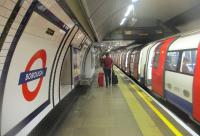
Borough: LUL 1995 stock train on a Northern Line service to Morden via Bank calling at the soutbound platform at Borough station, looking back north, on 1st January 2019.
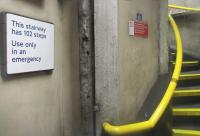
Borough: Foot of the spiral staircase at Borough station, LUL Northern Line, on 1st January 2019. For the view from the top of the stairway see image [[68650]].
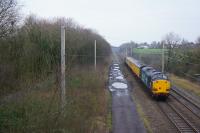
Darlington's Siding: New Years Day and Class 37s in T&T mode haul a Derby to Carlisle Network Rail Test train north on the WCML just north of Darlington' Sidings SB. The sidings were on the left as was a connection to the Blainscough Colliery branch. The WCML used to be 4 track at this point (between Standish Jct and Balshaw Lane Jct) however almost immediately after electrification the former slow lines were removed.
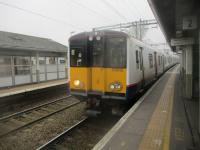
Seven Sisters: 315812, with a London Overground service from Liverpool Street to Enfield Town, arriving at Seven Sisters station on a cold and damp New Year's Day 2020. This station opened in 1872 and until 1963 was also served by the Palace Gates to North Woolwich service that had its own platforms at Seven Sisters (now demolished) on the right. The station became an interchange with the London Underground Victoria Line in 1968 upon the opening of its first stage from Walthamstow Central to Highbury & Islington.
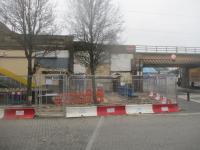
White Hart Lane: I visited White Hart Lane in September 2019 to photograph the new station entrance, opened the previous month and a vast improvement, and at that time the old entrance was still in place. It has since been demolished as seen in this view on 1st January 2020.
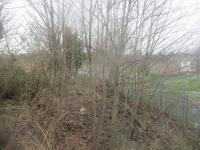
Seven Sisters: Through these trees at Seven Sisters can be discerned a small surviving section of the embankment that once supported the North Woolwich bound platform on the Palace Gates branch which diverged here from the Enfield Town line, seen from the latter's surviving northbound platform from which this view was taken on 1st January 2020. The branch closed to passengers on 7th January 1963, along with the stations at West Green, Noel Park & Wood Green and Palace Gates (Wood Green) and to freight on 5th October 1964. The branch was nonsensically left out of the belated 1960 electrification of the Enfield Town and Chingford Lines which became part of London Overground on 31st May 2015. Had sense prevailed, the branch could now be part of this north London electrified system too although should Crossrail 2 ever materialise, the proposed New Southgate branch will more or less follow the route of the old Palace Gates branch. But don't hold your breath that this will happen anytime soon.
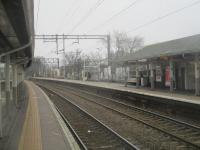
Seven Sisters: Seven Sisters station, Enfield Town and Cheshunt line, looking north on 1st January 2020. This opened in 1872 and lost its Victorian buildings when it was rebuilt and became an interchange with the LU Victoria Line in 1968. At the same time, the original street level entrance on West Green Road, at the far north end on the right in the background, was closed and its street level building demolished. The Palace Gates branch, which had its own platforms diverging north-west at the south end of the station, was closed to passengers in 1963 and to freight in 1964 and those platforms are now completely demolished, as are the branch stations at West Green, Noel Park & Wood Green and Palace Gates (Wood Green).
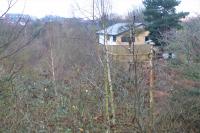
Poulton No 5 Junction: The site of Poulton No.5 signal box and the junction for Poulton Curve, the direct line to Blackpool North, which went right at this point. This view looks south from Gerrard's Terrace bridge and the beige coloured house has been built on the formation of the curve. Some time after final passenger trains in 1970 the line north from here was singled and this home signal protected the single line to Burn Naze. The surviving double track section curved left from here to Poulton No.3 box by the station. The two tracks are still in place but even this poor view of the line would be impossible with summer foliage. 1st January 2020. See image [[7178]] for the view north from this point.
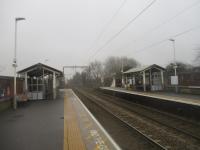
Turkey Street: Turkey Street station, in a residential area of Enfield, looking south on 1st January 2020. It was opened as Forty Hill by the GER on its new Churchbury Loop from Lower Edmonton (now Edmonton Green) to Cheshunt on 1st October 1891 and also with stations at Churchbury and Theobalds Grove. After the opening of a tramway to Waltham Cross along the parallel Hertford Road in 1904, this took a lot of the Loop's passenger traffic and it was closed on 1st October 1909. It reopened for four years during WWI for munitions workers at the factories on Hertford Road and this also included a new halt at Carterhatch Lane. After 1919, the line was little-used until it was suddenly reopened and electrified on 21st November 1960 as part of the north-east London electrification scheme that included the Enfield Town and Chingford lines. The three long disused stations were all reopened with Churchbury renamed Southbury (with the line being renamed the Southbury Loop) and Forty Hill renamed Turkey Street, only Theobalds Grove retaining its original name. However Carterhatch Lane was not reopened, despite much residential development in its catchment area since 1919.
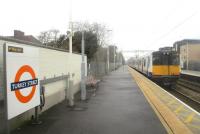
Turkey Street: 315808 with a London Overground service from Liverpool Street to Cheshunt departing from Turkey Street station, serving a much built-up area of residential eastern Enfield, on 1st January 2020. After the line and station (previously known as Forty Hill) reopened in 1960, and until the Lea Valley Line was electrified in 1969, all trains from Liverpool Street to Bishop's Stortford came this way, running fast to Lower Edmonton (now Edmonton Green), and then all stations, giving those on what is now the Southbury Loop a very good service of reasonably fast trains to and from London (an additional stop was included at Seven Sisters when that station became an interchange with the Victoria Line in 1968.) Since those days, the Loop has had only an all-stations service to and from Cheshunt, thus making it longer to get to and from London and since 30th May 2015, operated by TfL as part of London Overground, hence the roundel running-in board.
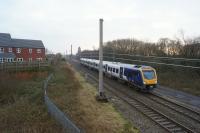
Darlington's Siding: Northern 195115 passes the site of Darlington's Siding SB to the right of the train, on the WCML near Coppull between Wigan and Preston on 01 January 2020. The unit is on a Manchester Airport to Barrow-in-Furness service. Darlington's Siding was the exchange point for coal traffic from Blainscough Hall Colliery to the west (connected by mineral railway) and the mainline. The main tower of Coppull Spinning Mill is in the background.
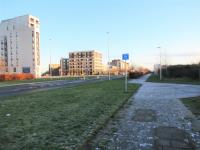
Breakwater Junction: A 'now' picture to Bill Roberton’s 'then' of 1980 (see image [[75464]]). A path follows the course of the harbour line, but otherwise it is hard to believe this is the same place. Off-camera to the right however things look pretty post-industrial.

Farington Junction: New Year's Day 2021 and the Orange Army are hard at work on the Down Fast at Farington Junction. The WCML was closed between Wigan North Western and Preston with a number of worksites carrying out track maintenance.
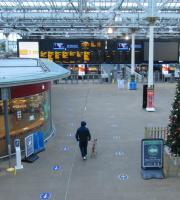
Edinburgh Waverley: There are only Anglo-Scottish trains from Waverley on New Year's Day. Any other year would see numbers of hungover English - and Scottish ex-pats - looking to make their way back south. On the first day of 2021 we see just one man and his dog. Without luggage, I doubt even they were travelling.

Edinburgh Waverley: New Year's Day at Waverley and ScotRail have generously left their barriers open - because they have no trains. As can be seen, it is points south of the border only. 'Travel with confidence', the poster says; it is difficult to see though why on this day, under the prevailing Covid regulations, anybody would be travelling legitimately from Scotland at all.
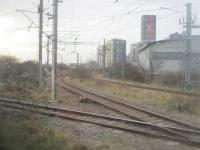
Willesden Junction High Level: View from 378205, with a London Overground service to Clapham Junction, just departed from Willesden Junction and diverging onto the West London Line, with the tracks to Richmond on the right, on the afternoon of New Year's Day, Saturday 1st January 2022. There were no regular local passenger services on the West London Line between 1940 and 1994 (apart from a completely unadvertised service for Post Office workers that began in 1945 between Kensington (Olympia) and Clapham Junction) and only then just a shuttle service of diesel units between Willesden Junction and Clapham Junction which replaced the unadvertised P.O. service. The line was later electrified with three new stations and became part of the London Overground in 2007. National Rail Southern services also use the line. (The unadvertised P.O. service was the last steam-hauled local passenger service in London, not being dieselised until 1967.)
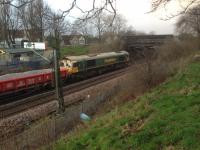
Yoker Depot: Freightliner 66613 at the Yoker Depot entrance with engineering wagons during a possession on New Year's Day 2022.
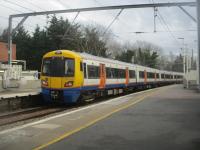
Gospel Oak: 378210 with a London Overground service to Hackney Wick (with replacement bus service just one stop from there to Stratford), departing from Gospel Oak on 1st January 2022.
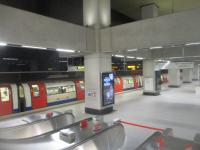
Nine Elms [Northern Line]: View from the escalator at the new Nine Elms Northern Line station, that opened on 20th September 2021, looking across the lower concourse with a train of LU 1995 stock about to depart to Battersea Power Station, on the afternoon of New Year's Day, Saturday, 1st January 2022.
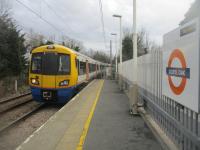
Gospel Oak: 378205, with a London Overground service to Clapham Junction, arriving at Gospel Oak on the afternoon of New Year's Day, Saturday, 1st January 2022.
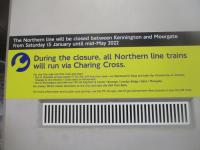
Nine Elms [Northern Line]: Sign at Nine Elms station, on the Northern Line Battersea Power Station branch, detailing the imminent temporary closure of part of the Bank branch for five months (for rebuilding the platforms at Bank station), seen on the afternoon of New Year's Day, Saturday, 1st January 2022. (The closure does not directly effect the new Battersea Power Station branch as ALL services on this can only run via Charing Cross anyway.)
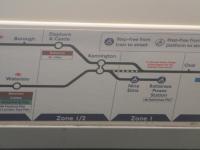
Kennington: Part of the route diagram above the seats on LU 1995 stock trains currently in use on the Northern Line, shows a hatched line at Kennington, indicating that peak hour trains on the Charing Cross branch still run to and from Morden. Yet on the new full diagram displayed at all stations on the system, it shows the new Battersea Power Station branch, but does not include the hatched line, incorrectly indicating trains on the Charing Cross branch only run to and from Battersea Power Station (see my photo, image no. 79564.) This view was taken from a Battersea Power Station to Edgware service, that I boarded at Nine Elms, while calling at Kennington station, on the afternoon of New Year's Day, Saturday, 1st January 2022.
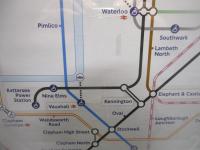
Kennington: Part of the incorrect new version of the LU diagram showing the Battersea Power Station branch of the Northern Line, that opened in September 2021. Incorrect as it shows ALL trains on the Charing Cross branch as running to and from Battersea Power Station with no peak hour trains from the Charing Cross branch beyond Kennington to Morden, as has always been the case. Yet on the renewed Northern Line route diagrams above the seats on the 1995 stock trains, this correctly shows not only the Battersea Power Station branch but also a hatched line at Kennington indicating that peak hour trains do indeed still run to and from Morden via Charing Cross (see my photo, image no. 79563). And in any case, as from 15th January 2022 until May 2022, all trains from Morden will have to run via Charing Cross anyway when the Bank branch of the Northern Line is partially closed for reconstruction of Bank station (see my photo, image no. 79552). This photo was taken at Nine Elms station on the new Battersea branch on the afternoon of New Year's Day, Saturday, 1st January 2022.
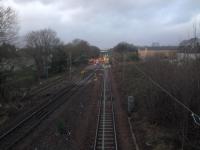
Yoker Depot: A New Year's Day engineering possession at the entrance to Yoker TMD.
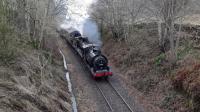
Rawtenstall: Centenary commemorated. In recognition of the amalgamation of the Lancashire & Yorkshire and London & North Western Railways on 1 January 1922 the East Lancashire Railway rostered the venerable L&Y locos 0-6-0 52322 and 0-6-0ST 51456 for service on 1 January 2022. The pair are seen on home territory approach Rawtenstall West hauling the 13:00 ex Bury Bolton Street.
Events
Events from the chronology which occured on this day. This generally lists events before 1995, the creation of the website.
News
These are old news items which which occured on this day. This generally lists events after 1995, the creation of the website.
| Year | Companies | Description |
|---|---|---|
| 2001 | Forth Rail Bridge^s new floodlighting | The new floodlighting on the Forth Rail Bridge will be inaugurated on New Year^s Day. |
| 2006 | New Year rail strike hits Virgin [BBC News] | Virgin Cross Country runs a reduced due to a strike by 300 members of the RMT union over pay. |
| 2007 | Website improvements : A Taster | The Railscot website is undergoing an update which will see the entire website replaced page by page. A key feature of the new site is that pages will include maps which are based on Ordnance Survey grid references, zoomable and can be brought backwards and forwards in time. There are many other changes too. Here^s the first taster - an example map for the Dundee and Newtyle Railway. The new pages will start coming online in the new year. |
| 2008 | More rail delays for passengers [BBC News Article] | Thousands of New Year travellers face further delays after engineering work is extended for another day. |
| 2011 | Rail passenger anger over Southeastern Trains delay compensation [Telegraph] | A train operator has been accused of avoiding paying compensation to passengers by cancelling hundreds of trains in the cold weather. |
| 2012 | Playwright Alan Bennett supports Pendle rail bid [Lancashire Telegraph] | RENOWNED playwright, author and actor Alan Bennett has lent his support to a campaign to reopen a disused railway line between Colne and Skipton. More than 300 councils, as well as a host of MPs and celebrities have already pledged support to SELRAP (Skipton-East Lancashire Rail Action Partnership). [From Mark Bartlett] |
| 2013 | Brighton Belle train restorers discover carriage [BBC News] | Restorers working on one of the UK^s most iconic trains, the Brighton Belle, have found an extra carriage - ^Hazel^. The train which ran daily between the south coast and London from 1933 until 1972 is currently being revamped at a cost of more than £2m. |
| 2014 | Corwen trains due to return in 2014 after 49-year wait [BBC News] | Trains are scheduled to return to a Denbighshire town for the first time in almost 50 years from next March. Corwen Station shut in 1965 but volunteers at nearby Llangollen Railway began work on a two-mile (3.2km) extension to reopen the link in 2011. With a half mile of track left to lay, organisers are "hopefully" scheduling the first train for 1 March. |
| 2016 | Eurotunnel’s Le Shuttle reports record 2015 [International Railway Journal] | EUROTUNNEL reported on December 23 that its Le Shuttle railfreight service for road vehicles set an annual record for Channel Tunnel lorry shipments in 2015 beating the previous record set in 2012. [From Richard Buckby] |
| 2018 | Britain^s trains the oldest since records began, study finds [ITV News] | UK trains are the oldest since current records began, a probe has revealed. Carriages on Britain^s track were typically built in the mid-1990s, according to the Office of Rail and Road. An analysis by the Press Association found that the average age of 21.1 years is older than at any point in publicly available records and 60% older than in 2006. Older trains often result in worse reliability, less comfortable journeys and poorer performance, the ORR has previously warned. Travellers using the Caledonian Sleeper service between London and Scotland have to put up with Britain^s oldest trains at 42 years old. Merseyrail, which runs trains in Merseyside, has the second oldest fleet at 38 years old. Both operators plan to introduce new rolling stock in the coming years. TransPennine Express, which operates in northern England and Scotland, has the newest trains at an average of just nine years old. |
| 2019 | Manchester police scour Victoria station after triple stabbing [Guardian] | Police forensic officers are scouring Manchesters Victoria station after a man stabbed three people, including a British Transport Police officer, during New Years Eve celebrations. |
| 2020 | Public cost of running nation^s trains soars to record £483m [Herald] | The soaring cost to the public purse of running Scotlands railways reached record levels last year, as the public handout to operators hit £482.8 million, it has been revealed. |
